Planning a mountain hike and scratching your head over the right way to dress? Rest assured, you’re not alone in this struggle. Balancing warmth with the fear of overdressing can indeed feel like walking a sartorial tightrope.
But worry not, after considerable research and my own tryst with the mountains, I’ve cracked the code on layering clothes effectively for such hikes. Here’s an offering of 17 top-notch tips that’ll help you strategically layer your clothing for comfort, adaptability, and safeguarding against nature’s whims.
Eager to take your hiking game a notch higher? Hop aboard and let’s explore!
Key Takeaways
- Layering clothes is important for mountain hikes as it helps balance warmth and adaptability in varying weather conditions.
- The layering system consists of a base layer, mid-layer, and outer layer. Each layer has a specific purpose: the base layer wicks away moisture, the mid-layer provides insulation, and the outer layer protects against rain, wind, and snow.
- When choosing materials for your base layers, polyester or merino wool are good options that wick away moisture. Avoid cotton as it holds onto moisture.
- For the middle layer, fleece jackets or wool sweaters provide insulation and warmth. Synthetic insulation or down-filled jackets are also suitable choices.
- The outer layer should be made of waterproof and windproof materials like Gore-Tex or nylon with a DWR coating to protect against rain, snow, and wind during mountain hikes.
Key Facts On Layering
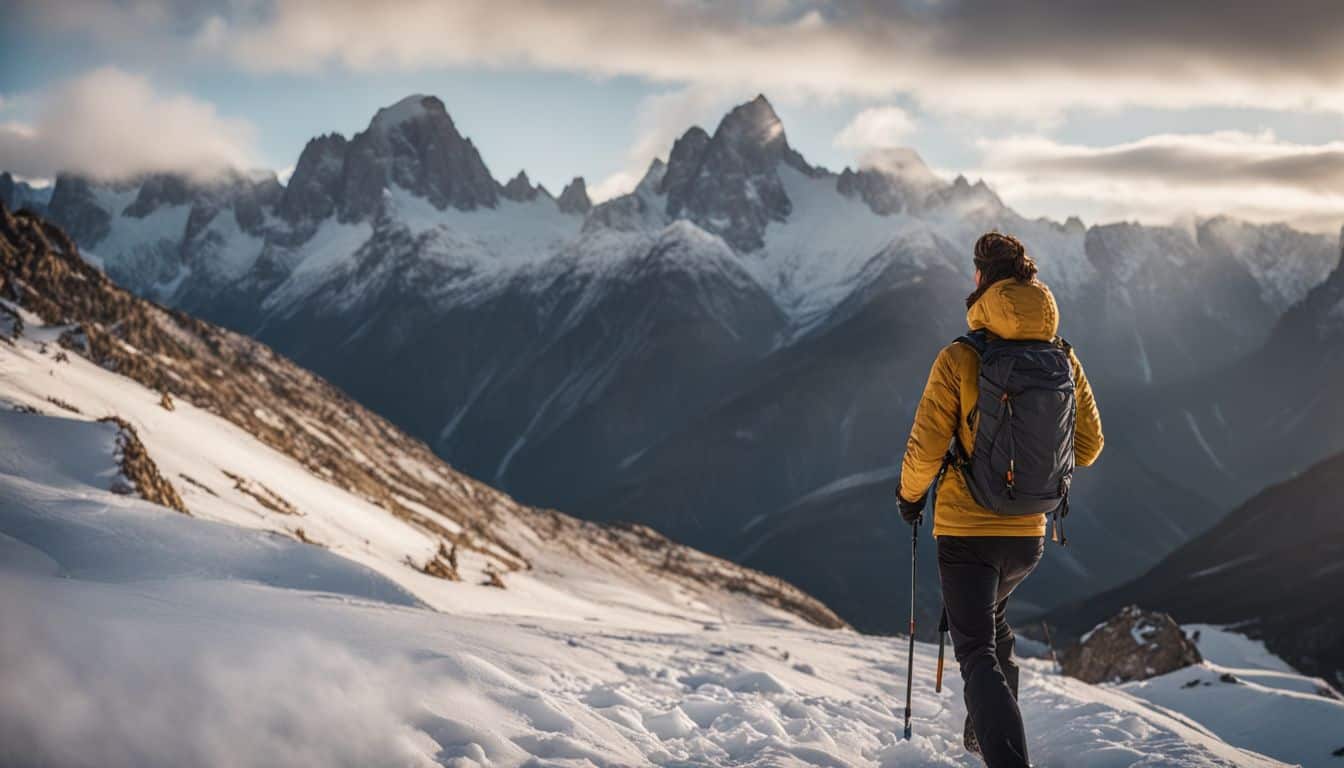
Layering is a must for mountain hikes. It’s like building a house. You start with the base layer that wicks away sweat from your body. Next comes the mid-layer, which gives you warmth and comfort.
The last one is the outer layer that fights against rain, wind, and snow. This system of dressing helps in all weathers during outdoor activities.
Each layer has its job to do. Like the base layers pull away moisture from your skin so you stay dry on hikes. Then come mid-layers giving you insulation by trapping warm air close to your body.
Lastly, outer layers keep out wind and nasty weather keeping you safe on your trip! Layering clothes isn’t just about staying warm – it’s also about managing moisture and protecting yourself from harsh weather during mountain climbing.
Importance of Base Layers
Base layers are essential for mountain hikes as they provide insulation and moisture-wicking properties to keep you warm and dry during your outdoor adventures.
Base Layer Materials
I want to talk to you about the right materials for your base layers. There are a few key choices here:
- Polyester is a solid pick. It’s good at wicking moisture, which means it pulls sweat away from your skin. Plus, it doesn’t cost too much.
- If you can spend more, consider merino wool. This natural fabric also wicks moisture. It has another perk too: it fights off bad smells.
- Silk is another fine choice as a base layer material. It feels nice on the skin and is great at staying dry.
- Nylon too works well for the base layer with properties similar to silk but more durable.
- Stop using cotton for base layers if you do so! Cotton holds onto moisture and can make you feel cold and damp.
Materials to Avoid
I can’t stress enough how important it is to pick the right materials for your hiking clothes. Some are good, others are not so good. Here’s a list of materials to avoid:
- Cotton: This fabric is a big no-no for mountain hikes. Why? It does not wick sweat away from your body well.
- Silk: While it might feel nice, silk doesn’t hold up well under tough conditions.
- Denim: Like cotton, denim holds moisture and can make you feel cold and wet.
Base Layer Types
There are different types of base layers that you can choose from for your mountain hikes. Here are some options:
- Undergarments: These are lightweight and comfortable base layers that provide a basic level of moisture-wicking and insulation.
- Thermal wear: Designed to provide extra warmth, thermal base layers are made with materials like fleece or wool to trap heat close to the body.
- Moisture-wicking fabric: These base layers are specifically designed to pull moisture away from the skin, keeping you dry and comfortable during your hike.
- Breathable clothing: Base layers made with breathable materials allow air to circulate, preventing overheating and excessive sweating.
- Sweatabsorbing materials: Some base layers are made with sweatabsorbing materials like bamboo or hemp, which help to control odor-causing bacteria.
- Climate control clothing: These specialized base layers use advanced technology to regulate body temperature, keeping you cool when it’s hot and warm when it’s cold.
- Performance apparel: Designed for high-intensity activities, performance base layers offer enhanced breathability and moisture management for optimal comfort.
Complete Guide on Layering Clothes for Mountain Hikes
Layering clothes for mountain hikes is crucial for staying comfortable and protected in varying weather conditions. The layering technique consists of three main layers: the base layer, the mid layer, and the outer shell.
The base layer is worn next to your skin and helps wick away sweat to keep you dry. Look for materials like merino wool or synthetic fabrics that are moisture-wicking and quick-drying.
Avoid cotton as it takes a long time to dry and can make you feel cold when wet. Base layers come in different types, such as lightweight for warm weather or heavyweight for colder temperatures.
The mid layer provides insulation to keep you warm in cooler temperatures. Fleece jackets or synthetic insulated jackets are good options for this layer as they provide warmth without adding much weight.
Again, avoid cotton as it doesn’t retain heat well when damp.
Lastly, the outer shell protects against rain and wind. Look for waterproof and windproof materials like Gore-Tex or nylon with a DWR (Durable Water Repellent) coating. There are different types of outer shells available, including hardshell jackets for heavy rain or softshell jackets that offer some breathability while still providing protection.
By properly layering your clothing, you can ensure maximum comfort and protection during your mountain hikes. Remember to choose materials that wick away sweat, provide insulation, and protect against rain and wind.
Stay prepared by having all three layers handy so you can adjust accordingly based on changing weather conditions.
Middle Layer: Insulation
The middle layer is crucial for providing insulation and trapping heat close to your body.
Middle Layer Materials
When it comes to layering clothes for mountain hikes, the middle layer is crucial for insulation and warmth. Here are some top materials you can consider for your mid-layer:
- Fleece: Fleece jackets are a popular choice for middle layers due to their excellent warmth-to-weight ratio. They provide great insulation and are lightweight.
- Wool: Thick wool layers, such as merino wool, are another fantastic option. Wool is known for its natural warmth and moisture-wicking properties, keeping you comfortable during your hike.
- Synthetic Insulation: Synthetic fill materials like polyester or PrimaLoft are often used in mid-layers because they retain heat even when wet. They are also quick-drying and breathable.
- Down: Down-filled jackets or vests offer exceptional warmth and compressibility. However, they may not be suitable if you anticipate encountering wet conditions during your hike.
Materials to Avoid
You should avoid certain materials when layering clothes for mountain hikes. Here are the materials you should avoid:
- Synthetic materials that can easily melt
- Wearing synthetic materials near a fire can have negative consequences
- Cotton should never be worn as a base layer for mountain hikes
Mid-Layer Types
When it comes to the middle layer, or the insulating layer, there are different types to choose from. Here are some options for your hiking adventures:
- Fleece Jackets: These are a popular choice as mid-layers for their warmth and breathability.
- Down Jackets: Made from soft feathers, these jackets provide excellent insulation and are lightweight.
- Synthetic Insulated Jackets: These jackets are made with man-made fibers that mimic the properties of down feathers.
- Wool Sweaters: Natural wool is a great option for its warmth and moisture-wicking abilities.
- Soft Shell Jackets: These jackets are flexible, breathable, and water-resistant, making them suitable for various weather conditions.
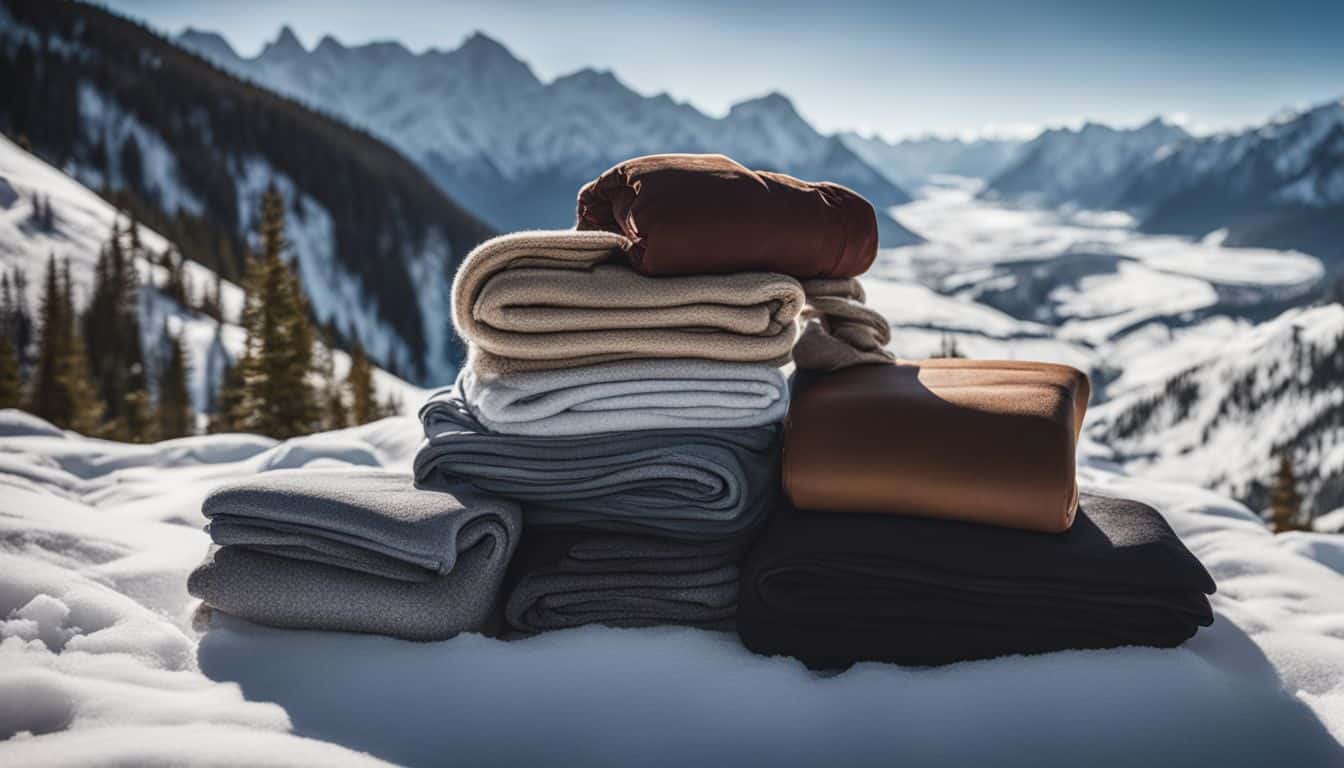
Outer Layer: Rain, Snow and Wind Protection
The outer layer is crucial for protecting against rain, snow, and wind during mountain hikes.
Outer Layer Materials
The outer layer of your hiking clothes is made of special materials that protect you from wind, rain, and snow. These materials are designed to keep you dry and warm in bad weather. Here are some important outer layer materials to look for:
- Waterproof: The outer layer should be made of a waterproof material, such as Gore-Tex or eVent. This helps to prevent water from seeping through and soaking your inner layers.
- Windproof: It’s important to have an outer layer that blocks the wind, so you don’t get chilled by gusts. Look for materials that are specifically designed to be windproof.
- Weatherproof: Your outer layer should also be able to handle other types of harsh weather conditions, like sleet or snow. Look for materials that provide all-around protection.
- Shell: The outer layer is sometimes called a “shell jacket.” It acts as a protective shell around your other layers, shielding you from the elements.
Outer Layer Types
The outer layer of clothing is important for protecting hikers from rain, snow, and wind. Here are some types of outer layers to consider:
- Waterproof shell: This type of outer layer is designed to keep you dry in rainy conditions. It has a waterproof coating or membrane to repel water.
- Windbreaker: A windproof outer layer is essential for blocking strong winds that can make you feel colder. Look for one that offers good wind resistance.
- Weather-resistant clothing: Some jackets and pants have weather-resistant properties that provide protection against both rain and wind. They are versatile options for various weather conditions.
- Rainproof jacket: If you expect heavy rain on your hike, it’s best to choose a rainproof jacket specifically designed for downpours. It will have sealed seams and a durable water-repellent (DWR) treatment.
- Snowproof outer layer: For snowy hikes, consider an outer layer with insulation and water-resistant properties to keep you warm and dry in the snow.
Summer Layering Example Gear
For summer hikes, your layering gear could consist of a lightweight moisture-wicking base layer, a breathable mid-layer like a fleece sweater, and a windproof outer layer to protect against unexpected weather changes.
Your Summer Layering Gear Could Look Like This
Here is a list of gear you could wear for summer hiking:
- Non – cotton fabrics like polyester or wool are recommended for staying comfortable and dry.
- Moisture – wicking base layers made of breathable fabrics like polyester or wool are important to keep you cool and dry.
- Choose odor – resistant materials like merino for socks to increase durability during long hikes.
- Wear lightweight and quick – drying clothes to stay comfortable in hot weather.
- Opt for a windbreaker or light rain jacket in case of unexpected weather changes.
- Wear a wide – brimmed hat or a cap to protect your face from the sun.
- Don’t forget sunglasses to shield your eyes from the glare.
- Use sunscreen with a high SPF to protect your skin from harmful UV rays.
- Wear lightweight, moisture – wicking socks to prevent blisters and keep your feet dry.
- Choose comfortable, sturdy hiking boots that provide good ankle support.
Rainy, Cool Weather Layering Example
When it comes to layering for rainy and cool weather hikes, it’s important to be prepared for both wet conditions and dropping temperatures.
Your Cool Weather Layering Gear Could Look Like This
When hiking in cool weather, it’s important to layer your clothing to stay comfortable and protected. Here are some gear suggestions for your cool weather layering:
- Start with a moisture – wicking base layer made of materials like polyester or merino wool to keep sweat away from your skin.
- Add an insulating mid – layer such as a fleece jacket or down vest to trap heat and keep you warm.
- Top it off with an outer layer that is windproof and waterproof to protect you from rain and cold winds. Look for jackets made of Gore-Tex or similar materials.
- Don’t forget a hat made of wool or synthetic material to keep your head warm.
- Wear wool socks for added warmth and moisture – wicking properties.
- Finally, choose insulated gloves that are waterproof and provide good dexterity.
Cold Weather Layering Example
For those chilly winter hikes, you’ll need to bundle up with multiple layers to stay warm and comfortable. From moisture-wicking base layers to insulating mid-layers and weatherproof outer shells, I’ve got the perfect cold-weather layering gear that will keep you cozy on those frosty mountain trails.
Don’t miss out on these essential tips for mastering your cold weather layering game!
Your Cold Weather Layering Gear Could Look Like This
In cold weather, it’s important to layer your clothing properly. Here’s what your cold weather layering gear could look like:
- Base Layer:
- Materials: Merino wool or synthetic fabrics like polyester or nylon.
- Types: Long-sleeved shirts and leggings.
- Middle Layer (Insulation):
- Materials: Fleece or down jackets.
- Types: Hooded jackets or vests.
- Outer Layer (Rain, Snow, and Wind Protection):
- Materials: Waterproof and breathable fabrics like Gore-Tex.
- Types: Hardshell jackets and pants.
- Accessories:
- Hat: A warm hat to protect your head.
- Gloves: Insulated gloves that are touchscreen compatible.
- Neck Gaiter or Scarf: To keep your neck warm.
- Socks: Moisture-wicking and insulated socks for warmth.
- Footwear:
- Waterproof hiking boots with good traction.
Layering Tips
Stagger your zippers, foil fog, test your gloves, gaiter up, and avoid these layering mistakes.
Stagger Your Zippers
Staggering your zippers is an important tip for layering clothes when you go hiking in the mountains. It can help prevent discomfort and irritation caused by multiple zippers rubbing against your neck and chin.
By staggering the placement of your zippers, you can optimize comfort and avoid any potential irritation while enjoying outdoor activities. This practical technique not only improves the functionality of your hiking clothing but also ensures that you have a more enjoyable experience on your mountain hikes.
So don’t forget to stagger those zippers for a more comfortable and hassle-free adventure!
Foil Fog
Foil Fog is a common problem for hikers when their goggles steam up during mountain hikes. It happens because we get too hot and our body temperature rises. But don’t worry, there’s a simple remedy! Just unzip your clothing to let some air in and cool down your body.
By managing your body temperature, you can prevent the issue of Foil Fog and keep enjoying your hike without any trouble. So remember, if your goggles start steaming up, just unzip and stay cool!
Test Your Gloves
When you’re out on a mountain hike, it’s essential to have the right gear to keep your hands warm and protected. One important tip for layering is to test your gloves before heading out.
Make sure they fit well and provide enough insulation for the cold temperatures you’ll encounter. You don’t want to find yourself with frozen fingers halfway through your hike! So take the time to try on different gloves and assess their warmth and dexterity.
It’s also a good idea to bring along an extra pair, just in case one gets wet or damaged. Remember, keeping your hands cozy is crucial for enjoying a comfortable and safe mountain adventure.
In freezing temperatures, exposed skin can quickly become frostbitten, so make sure your gloves cover all areas of your hands properly. Look for gloves made from synthetic materials or wool as they dry faster and wick away moisture from sweat or precipitation.
Gaiter Up
To protect my legs while hiking, I always make sure to “gaiter up.” Leg gaiters are like pant guards that you can wear over your hiking boots and pants. They provide an additional shield against rocks, thorns, and other trail obstacles.
Gaiters come in different materials and styles, but the key is to choose ones that are durable and water-resistant. By wearing gaiters, I can hike confidently knowing that my legs are well-protected from any unexpected surprises along the trail.
And don’t forget about neck gaiters too! They’re not just fashionable accessories – they also provide extra protection for your neck against wind, sunburn, and bugs. So when gearing up for a hike, don’t forget to “gaiter up” for added comfort and safety on the trails.
Avoid These Layering Mistakes
When layering clothes for mountain hikes, it’s important to avoid these common mistakes:
- Forgetting to bring a jacket: Always pack a waterproof and windproof jacket, even if the weather seems fine. It can change quickly in the mountains.
- Wearing cotton as a base layer: Cotton absorbs sweat and takes a long time to dry, which can make you cold and uncomfortable. Opt for moisture-wicking materials like merino wool or synthetic fabrics instead.
- Layering too much: While it’s important to stay warm, over-layering can lead to excessive sweating and discomfort. Dress in layers that you can easily remove or add as needed.
- Neglecting your extremities: Don’t forget about your hands, feet, and head! Cold hands or a chilly head can ruin your hike. Pack gloves, hats, and extra socks to keep them warm.
- Not considering ventilation options: Sweating is inevitable during hikes, especially uphill climbs. Look for clothing with zippered vents or pit zips that allow you to regulate your body temperature.
- Choosing the wrong material for insulation: Opt for lightweight and breathable materials like down or synthetic insulation for your mid-layer. Avoid bulky or heavy materials that restrict movement.
- Ignoring the importance of proper footwear: Your hiking boots should be sturdy, waterproof, and provide good traction on different terrains. Don’t compromise on quality when it comes to footwear.
- Failing to consider layering bottoms: Layering isn’t just for tops! Consider wearing thermal leggings or base layer bottoms under your pants for added warmth in colder conditions.
Conclusion on Layering Clothes For Mountain Hikes
Mastering the art of layering clothes for mountain hikes can greatly enhance your hiking experience. By choosing the right base, middle, and outer layers, you can stay warm, dry, and comfortable in any weather conditions.
Follow these 17 top tips to become a layering pro and enjoy your hiking adventures to the fullest!
FAQs on Layering Clothes For Mountain Hikes
1. Why is layering clothes important for mountain hikes?
Layering clothes is important for mountain hikes because it helps regulate body temperature, keeps you comfortable in changing weather conditions, and allows you to easily adjust your clothing as needed.
2. How many layers should I wear for a mountain hike?
It is recommended to wear at least three layers for a mountain hike: a base layer to wick away sweat, an insulating layer to keep you warm, and an outer shell layer to protect against wind and rain.
3. What materials are best for the different layers when hiking in the mountains?
For the base layer, choose moisture-wicking fabrics such as polyester or merino wool. For the insulating layer, consider fleece or down jackets. The outer shell layer should be made of waterproof and breathable materials like Gore-tex.
4. Should I bring extra clothes on a mountain hike?
Yes, it’s always a good idea to bring extra clothes on a mountain hike in case of unexpected changes in weather or if your current clothing becomes wet or damaged.
5. How do I properly layer my clothes for a mountain hike?
To properly layer your clothes for a mountain hike: start with your base layer (long-sleeve top and leggings), add an insulating mid-layer (fleece or down jacket), then finish with an outer shell (waterproof jacket). Adjust layers as needed based on temperature and activity level during the hike.

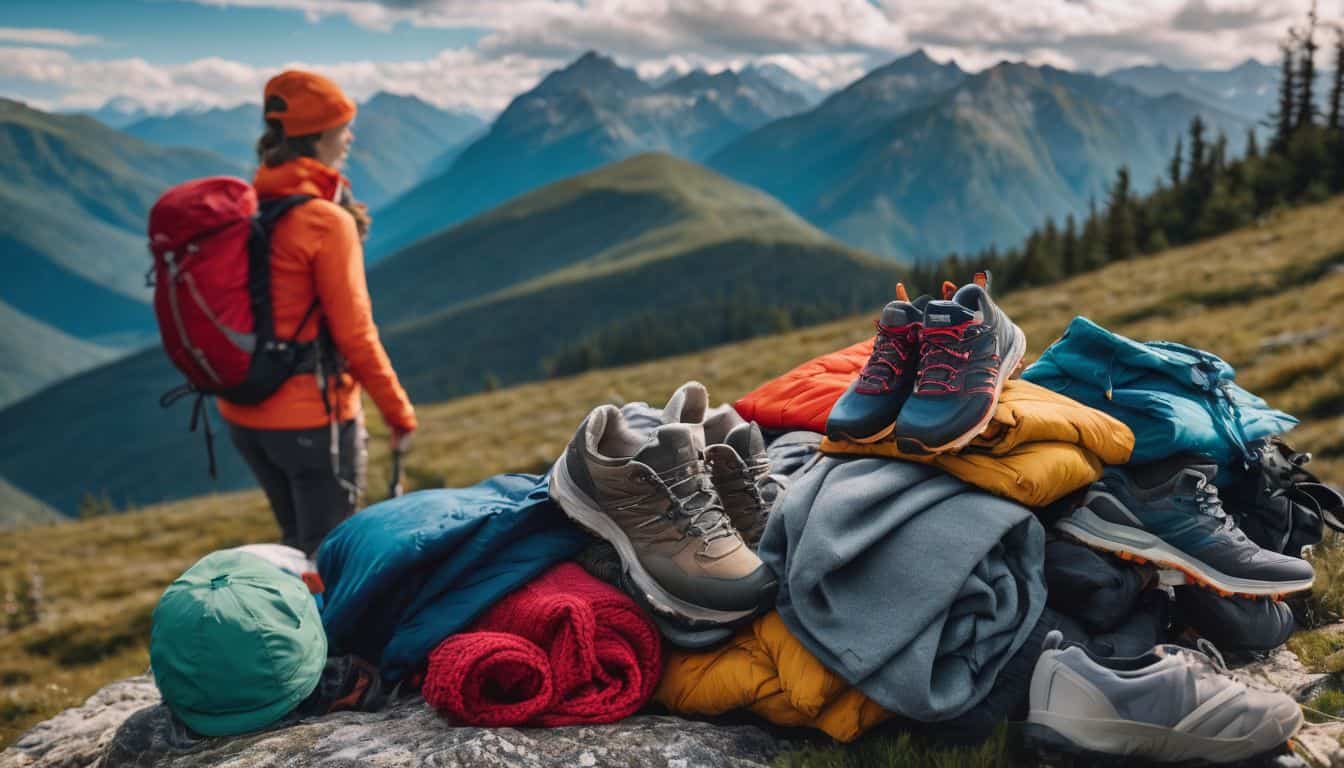
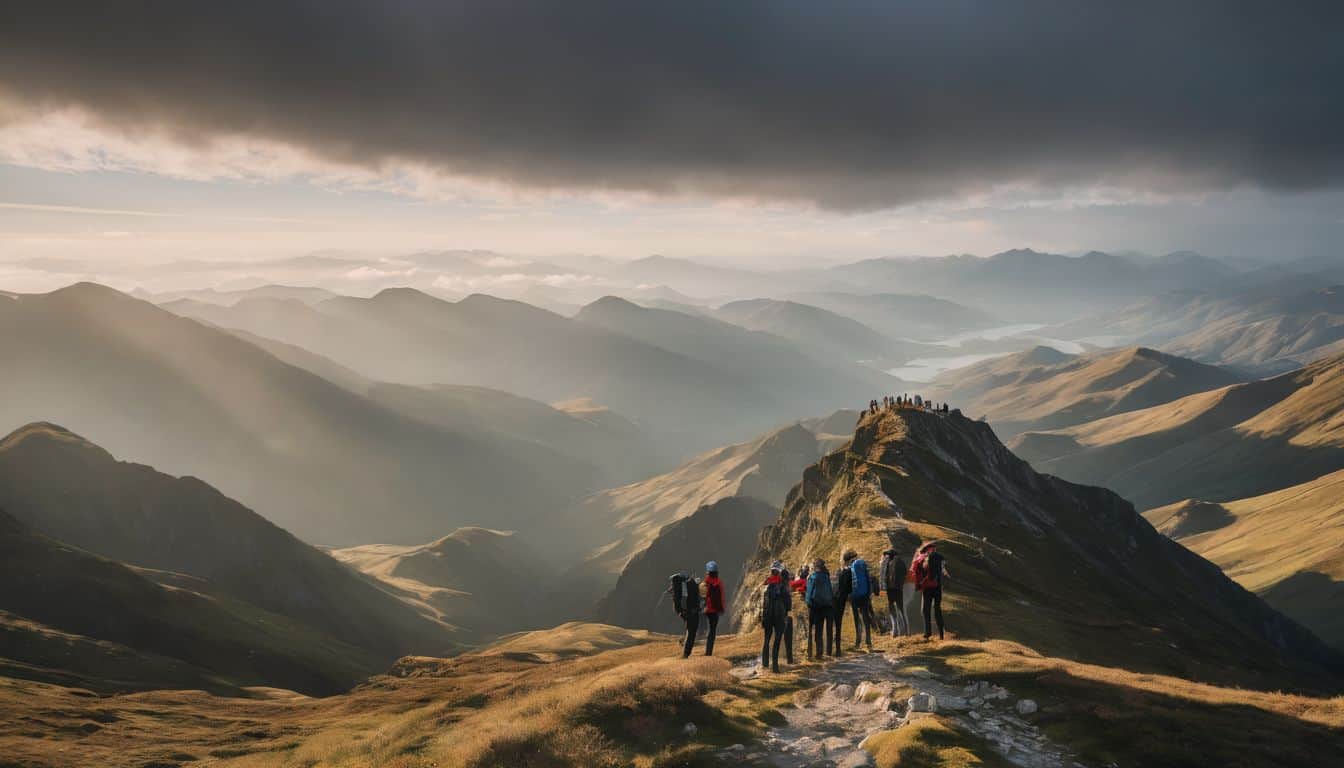
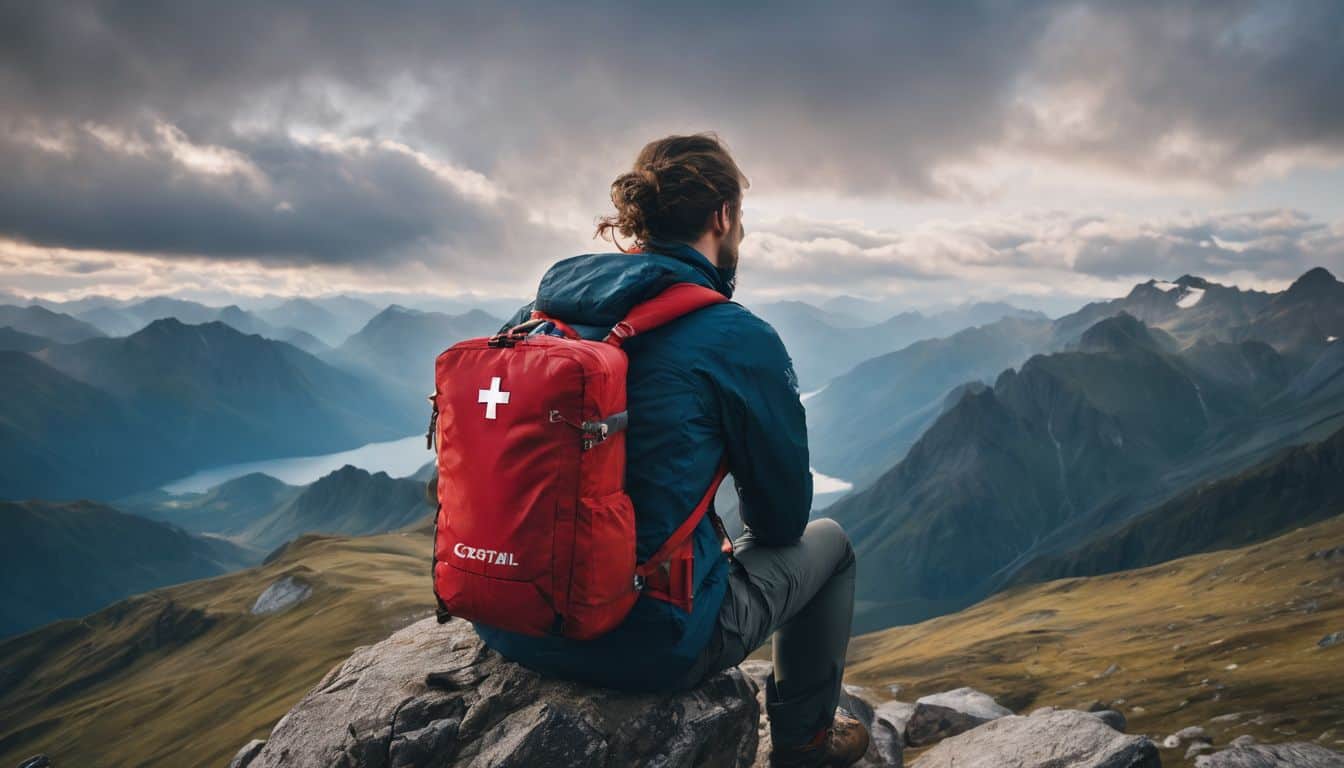
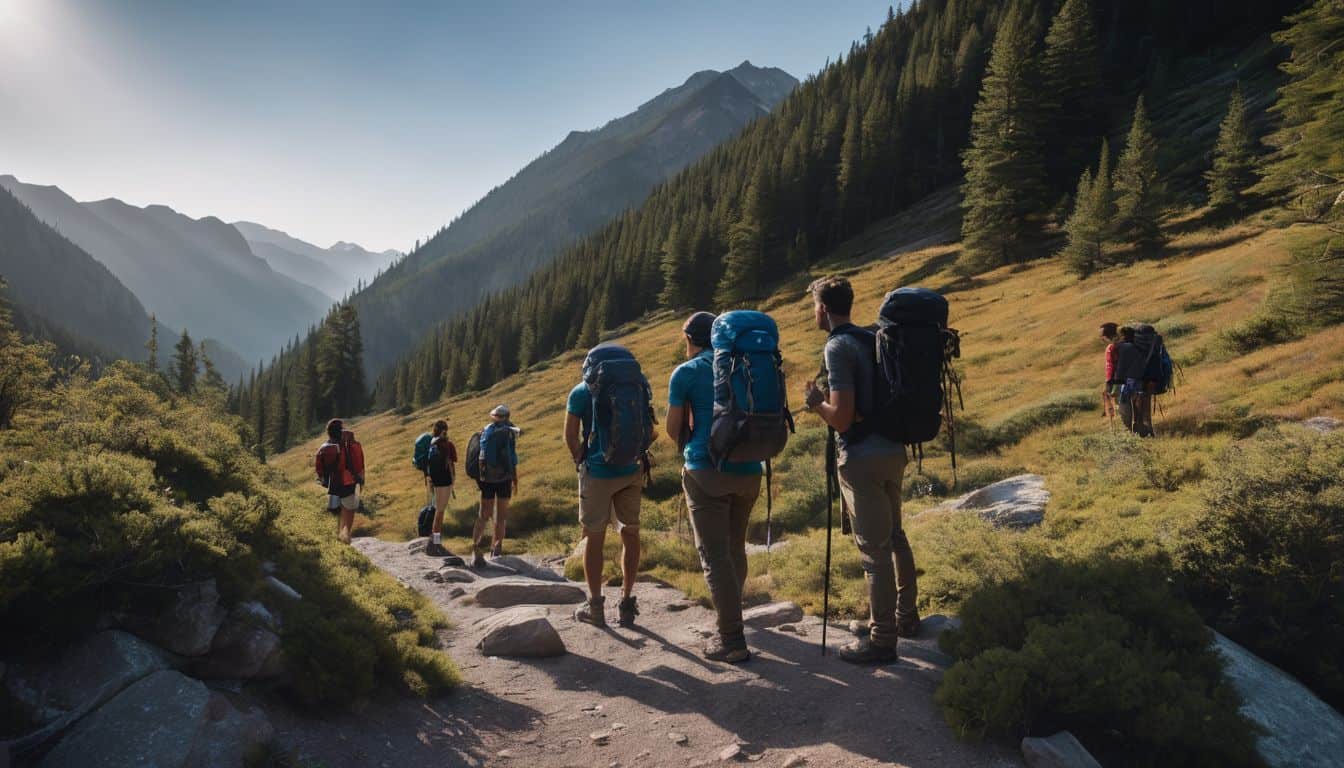
Leave a Reply